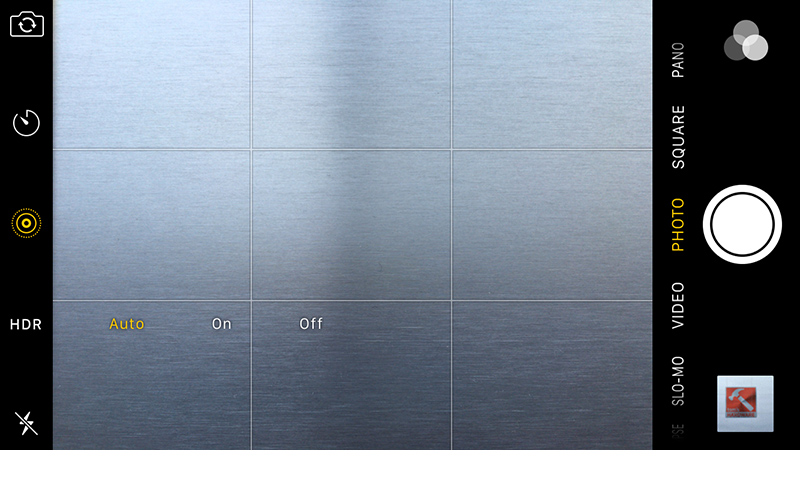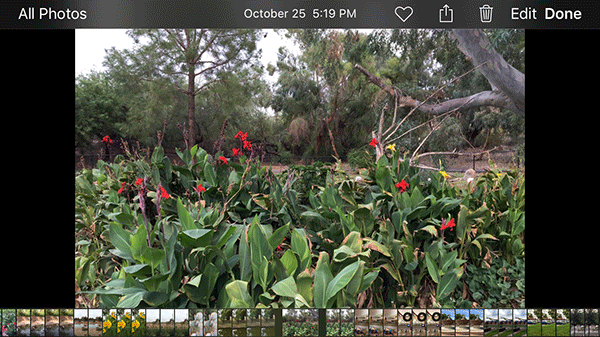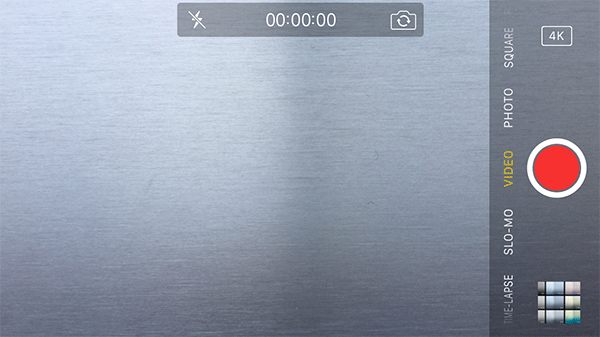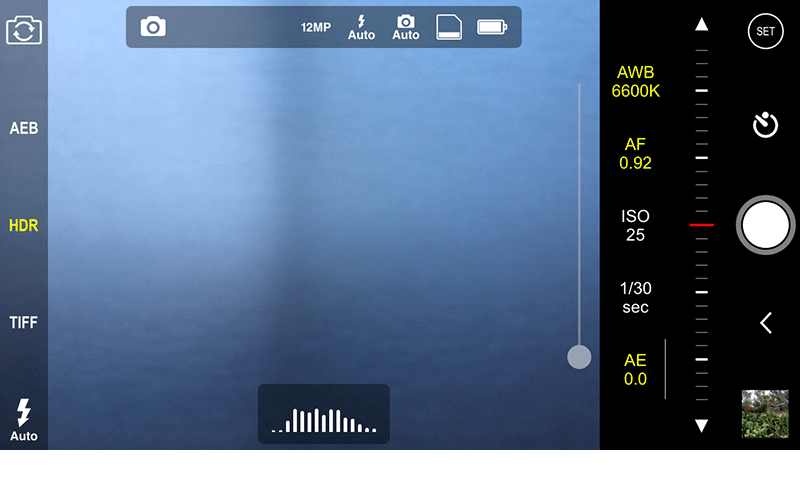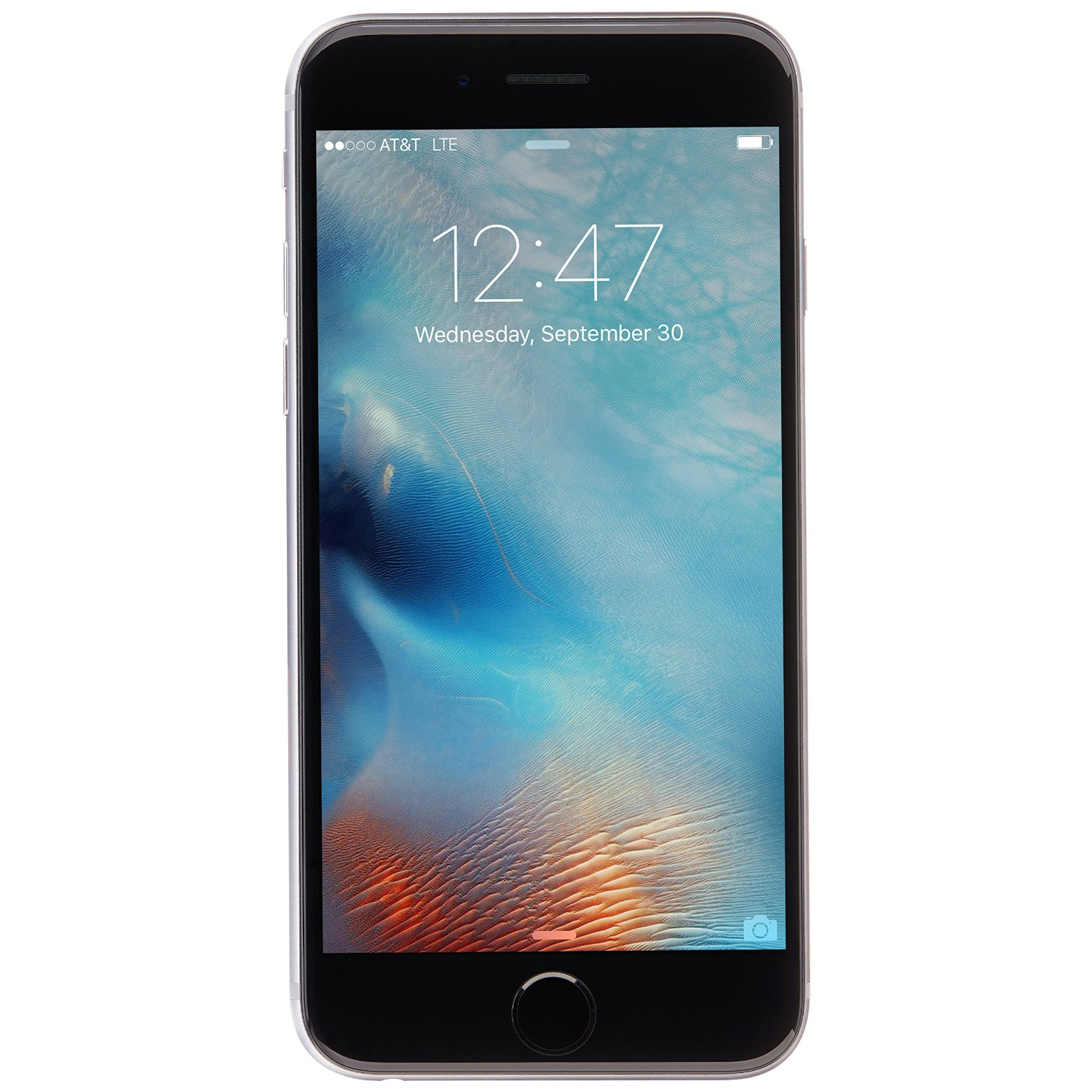Apple iPhone 6s And 6s Plus Review
The iPhone 6s and 6s Plus may look just like last year's iPhones, but hardware updates and Apple's new 3D Touch feature make them feel completely new. While the new cameras and 4K video recording may get the hype, it's the 2GB of RAM that steals the show.
Why you can trust Tom's Hardware
Camera Features
iPhones have had very good, if not the best, rear cameras for a number of years. Over the past year, however, we've seen phones such as Samsung's Galaxy S6 usurp the iPhone’s camera performance crown. Take image detail, for example. Phone cameras now routinely exceed 20 MP, but the iPhone has been stuck at 8 MP since the 4s came out four years ago.
Note: For an explanation of camera hardware and terminology, please see our Camera Phone Technology 101 article.
While pixel count is not the only factor that determines image quality (as noted in our 101 article linked above), Apple's iSight camera is due for an update. After acquiring LinX, an Israel-based company that develops multi-aperture cameras, and PrimeSense, which worked on Microsoft's original Kinect, expectations were high. Unfortunately, we'll have to wait for the iPhone 7 to see this radical new camera in action; the iPhone 6s and 6s Plus stick with a conventional smartphone camera design.
The new iPhones get a new camera sensor at least. Recent iSight cameras were made by Sony, and it appears this new sensor is too. Resolution increases to 12 MP, but the sensor size remains unchanged. Packing more pixels into the same size sensor means pixel size decreases to 1.22µm from 1.5µm. Generally speaking, smaller pixels capture less light, reducing low-light performance and dynamic range, which is a cause for some concern.
While Apple was one of the first companies to embrace backside-illuminated sensors, it has taken the company a bit longer to adopt deep trench isolation technology. Samsung's ISOCELL sensors have been using this technique, which reduces electrical and optical crosstalk by surrounding each pixel with a barrier material, for a couple of generations now. This improves color fidelity by keeping charge from leaking into a red pixel from a blue pixel, for example.
The new sensor still includes Focus Pixels, which is just Apple's way of saying phase detect autofocus (PDAF). The iPhone still has the best implementation of PDAF, delivering smooth, continuous autofocus that locks onto objects very quickly.
Another expected feature for a flagship phone camera is optical image stabilization (OIS). This technology helps reduce motion blur caused by shaky hands. It's especially helpful in low-light situations since it allows the camera to use a longer exposure and still capture a sharp image. Like last time, however, this feature is exclusive to the Plus version of the iPhone. It's unfortunate that Apple withholds this feature from the smaller iPhone 6s, especially considering the move to smaller pixels. We'll see in the next section if this omission handicaps the iPhone 6s' low-light performance.
Get Tom's Hardware's best news and in-depth reviews, straight to your inbox.
It appears the iPhone 6s uses the same optics as the iPhone 6 and 5s, an array of five lenses. This is possible since it keeps the same sensor size and focal length. Another thing that has not changed is the f/2.2 aperture, which would require a thicker camera module. Most flagship phones are trying to improve low-light performance by switching to larger f/2.0 to f/1.8 apertures, putting the iPhone 6s at a disadvantage. The LG G4's f/1.8 aperture lens, for instance, is 69 percent larger. Other flagships from the current generation have apertures larger than the iPhone 6s too, including the Moto X Pure Edition at 53 percent, the Galaxy S6/S6 edge+/Note5 at 44 percent, the OnePlus 2 at 41 percent, and the HTC One M9 at 30 percent. By reducing pixel size and stubbornly refusing to update the camera's optics, Apple risks compromising the iPhone's performance.
The iPhone's front-facing FaceTime HD camera also gets an update for this generation. The new sensor in the iPhone 6s squeezes 5 MP into the same 1/5" size sensor as the previous 1.2 MP shooter. This means pixel size decreases to 1.12µm from 1.9µm, which could have some negative side effects.
To cope with the higher resolution images from the new sensors, the iPhone 6s includes a new Apple-designed image signal processor (ISP). The hardware itself is a mystery, but Apple claims it provides better temporal and spatial noise reduction, which could help compensate for the new camera's smaller pixels. The ISP also implements Apple's third-generation local tone mapping algorithm that helps preserve contrast in high dynamic range (HDR) images.
Camera Software
Apple's Camera app has a simplistic interface that provides very little control over the camera's settings, relying almost exclusively on automatic software controls. Fortunately, the iPhone's autofocus, autoexposure, and auto white balance are the best we've seen in a smartphone, making the capture of images and video an easy point-and-shoot affair.
The camera interface provides easy access to the flash, HDR, and self-timer controls on one side. There's also the obligatory button to switch between the front and rear cameras. Unlike most other controls that allow you to just tap them to change settings, Apple's camera controls only reveal the underlying options when tapped, forcing you to tap again on the desired option. This hunt-and-peck method is less efficient than simply tapping the same button once or twice.
In the middle of these other controls is a new toggle for the Live Photos feature available only on the iPhone 6s and 6s Plus. When active, it records 1.5 seconds of audio and video before and after the time when the shutter button is pressed, turning a snapshot in time into a three second period you can bring back to life by pressing on the photo. Beyond viewing them in the photo gallery, they can also be used to create a dynamic wallpaper on the Lock screen. These short moments are also shareable within Apple's universe, but outsiders will only see the still image.
Live Photos works by continuously recording video into a small, rolling memory buffer that continuously discards unused video beyond the previous 1.5 seconds. This feature works with both the front and rear cameras, resulting in a still image in JPEG format and a small MOV video file. The still images are recorded at each camera's full resolution, while the video (1440x1080 rear and 1280x960 front) is cropped to a 4:3 aspect ratio to match the photo. The H.264 High profile video is recorded at 13-15 fps and is accompanied by a single 16-bit 44.1kHz PCM audio channel.
The appeal of Live Photos is debatable; some people will love it and leave it turned on all the time, while others will try it a few times before turning it off and forgetting about it. Its biggest limitation is the low frame rate that makes it unsuitable for capturing scenes with fast motion—even scenes with moderate motion look choppy. There are times, however, where Live Photos successfully adds emotional impact to a still image—trees blowing in a light breeze or an animated facial expression, for example. Just keep in mind that Live Photos take up an additional 3-4MB of storage space each, and because the camera is constantly recording video whenever the Camera app is open, it drains the battery a little faster.
The other half of the camera interface includes a dedicated shutter button and a button that provides access to a small selection of image filters. The filters are not particularly useful, but there's a live preview of the effects in both the thumbnail selection view and the viewfinder. There's also a small thumbnail of the last picture taken that opens the photo gallery when tapped or a full-screen preview when gently pressed, utilizing the new 3D Touch Peek feature. Curiously, when "Peeking" there's an image scrubber for quickly scanning through photos in the portrait interface, but not in landscape.
Pressing a little harder will Pop the image open into a photo viewer with a black theme that differs from the regular Photos app. This darker interface includes an image scrubber along the bottom for selecting a photo as well as options to favorite, share, or delete the image, just like the Photos app. The image editor found in the Photos app is also accessible from within the darker interface, providing controls to crop and rotate, adjust brightness and color properties, and apply photo filters. Tapping "All Photos" in the upper-left corner launches the Photos app.
Above the shutter button is a text-based slider for selecting the camera mode; this control is incredibly awkward. For starters, it does not rotate with the screen, leaving the text vertical in landscape mode. The biggest issue, though, is the control's finicky nature: roughly 50 percent of the time it moves in the wrong direction, either jumping randomly when you first touch it or moving opposite to the direction you swipe. It's absolutely infuriating. Numerous times I've missed an opportunity to capture something my son is doing on video just because I cannot select the video option. In addition to the standard Photo and Video modes, there's also options for taking square format photos, panoramic photos, and time-lapse videos—assuming you have the patience to keep swiping until you land on the right option.
Outside of the standard tap-to-focus option and a manual exposure slider, there's no additional camera controls in the iPhone's stock camera app, not even an option to set image resolution. Fortunately, Apple added an API in iOS 8 that exposes the more advanced controls, allowing third-party app developers to fill the void. Using one of these other camera apps, you can manually control ISO, shutter speed, white balance, and exposure.
The interface for the FaceTime HD camera is exactly the same as the rear iSight camera. Features are mostly the same too, including support for automatic HDR and Live Photos. The only features not supported by the front-facing camera are panoramic images and slow motion video.
Besides the new sensor, the front-facing camera on the iPhone 6s and 6s Plus adds the Retina Flash feature that uses the display's backlight to illuminate selfies. This is a rather clever reuse of existing hardware that other phones have employed too, notably LG's G3 and G4. Apple's Retina Flash actually uses a custom chip to control the backlight, temporarily boosting brightness by a factor of three. Similar to the True Tone flash on the back, there's a preflash that the camera uses to evaluate the current lighting condition and then the main flash that's adjusted based on the ambient lighting to produce more realistic colors.
Video
Shooting video with the iPhone 6s or 6s Plus is very similar in both features and quality to the iPhone 6 with two notable exceptions. First, the iPhone can now (finally) shoot 4K video thanks to the higher resolution 12 MP iSight camera. UHD 4K video requires ~8.3 MP, in addition to extra pixels around the frame's borders to provide oversampling for electronic image stabilization (EIS), which is why the iPhone 6 and earlier were limited to 1080p. Second, the iPhone 6s Plus can now use OIS, in addition to EIS, while recording video. Combining these two different image stabilization techniques should further dampen vibrations both big and small, resulting in smoother, steadier video.
Rear Camera Video Modes
| Video Mode | Resolution | Frame Rate (fps) | Video Bit Rate (Mb/s) | Video Codec | Profile | Audio Codec | Audio Bit Rate (kb/s) |
|---|---|---|---|---|---|---|---|
| UHD 4K | 3840x2160 | 30 | 50 | H.264 | High | AAC (44.1kHz) | 80 |
| FHD 1080p60 | 1920x1080 | 60 | 26 | H.264 | High | AAC (44.1kHz) | 80 |
| FHD 1080p | 1920x1080 | 30 | 17 | H.264 | High | AAC (44.1kHz) | 80 |
| HD 720p | 1280x720 | 30 | 9 | H.264 | High | AAC (44.1kHz) | 80 |
| Slo-moHD 720p | 1280x720 | 240 | 40 | H.264 | High | AAC (44.1kHz) | 80 |
| Slo-mo FHD 1080p | 1920x1080 | 120 | 50 | H.264 | High | AAC (44.1kHz) | 80 |
Front Camera Video Modes
| Video Mode | Resolution | Frame Rate (fps) | Video Bit Rate (Mb/s) | Video Codec | Profile | Audio Codec | Audio Bit Rate (kb/s) |
|---|---|---|---|---|---|---|---|
| HD 720p | 1280x720 | 30 | 9 | H.264 | High | AAC (44.1kHz) | 80 |
All video recorded with the new iPhones uses the H.264 high profile. The bit rate for 1080p30 video is a fairly standard 17 Mb/s, the same rate as Samsung's Galaxy S6 family of devices and LG's G4. There's also a 1080p60 option, which is something not available on all flagship phones yet, that produces very fluid video and is great for capturing scenes with a lot of motion. The new 4K video option records at 50 Mb/s, about the same as the Galaxy S6's 48 Mb/s but more than the G4's relatively low 30 Mb/s. Unlike the 5-minute time restriction enforced by most other phones, there's no time restriction when recording 4K video with the iPhone, and you can capture 8 MP still images while recording 4K video too.
When it comes to slow motion video, the iPhone still produces the best results by far. While others struggle just to create choppy, low-quality 720p120 video with no audio track, the iPhone produces smooth 720p240 video along with audio. The 6s even adds a new 1080p120 slow motion option. Because these modes use higher compression to keep file size reasonable, there is more image noise than what’s present in the regular video modes.
Video quality for the other video modes is also very good. Image noise is comparable to other flagship phones such as the Galaxy S6. The 4K video, however, does exhibit noticeably more noise than the HD modes because of the higher compression and the limits of H.264, an issue that plagues all other phones that shoot 4K video too. We'll have to wait for H.265 support before we can realize the full quality benefit from 4K video.
The iPhone 6s still lacks support for HDR video recording, a limitation that’s especially noticeable when recording outdoors. The good news is the iPhone’s camera does a good job prioritizing exposure so that the subject of the video is usually properly lit, even though the sky may be overexposed or shadows underexposed. It also adjusts exposure quickly when it encounters a change in lighting conditions. The same is true of the iPhone’s auto white balance routine. Color accuracy is very good in most circumstances.
What the iPhone really excels at is using PDAF for continuous autofocus. As the camera or subject moves, focus is continuously adjusted, always keeping the video looking sharp. This also frees you from having to tap the screen to refocus during recording. You can see an example video of PDAF in action from our iPhone 6 review.
As mentioned above, the iPhone 6s Plus now uses OIS along with EIS in all recording modes to help create smoother videos. While the addition of OIS does help dampen some vibration from hand shake, it creates some undesirable side effects of its own. The first is OIS wobble, where the camera tilts whenever there’s a change in direction. The iPhone’s cinematic video stabilization (EIS) does reduce this disorienting effect, making it less noticeable than on other phones such as the Galaxy S6 and LG G4. The second, related issue is OIS jitter, which occurs whenever the sensor reaches its excursion limit. This is most noticeable when walking; each step causes a small vertical vibration in the video. Personally, I prefer the iPhone 6s' EIS only solution that produces more natural looking video.
Even though the iPhone 6s and 6s Plus do not achieve video nirvana—there's a reason why companies still make dedicated video cameras—they are the most well-rounded smartphones for recording video, with no glaring weak points.
Current page: Camera Features
Prev Page Display And Audio Next Page Camera Performance And Photo Quality-
Shankovich I know lots of people are going to trash talk Apple here, but most of us know our hardware and thus should know a bit better. 2 gigs of ram seems low, but Apple's software is highly optimized and we know you can have a bunch of stuff open without it being that noticeable.Reply
Secondly, unless your eye ball touches the screen, you're not going to see a difference between a 1080p screen and above at typical viewing distances for a phone. (If you're going to complain about gaming on it, this site isn't for you). "So why don't they just put a higher res screen on it for the marketing aspect?" Well, aside from them being Apple, which is enough for most people, a higher res screen that most will barely be able to tell from FHD also means more work for the GPU, which means less battery life.
LG, Samsung, etc all do the same thing year over year, that being incremental upgrades, like Apple does. They're all the same. We've reached a saturation point in mobile devices now (probably did 2 years ago). -
10tacle What year is this? Why are we still seeing "new" so-called high end phones with 1080p 5.5" displays and 16GB base memory offerings? And for anyone who says that you can't really see the difference between 1080p and 1440p on such a small screen, get your eyes checked. Happy Samsung Note 5 owner here, upgrading from an 1136p, 326ppi iPhone 5S. (The Galaxy 6 and Note 5 are 1440p with 518ppi for anyone who cares).Reply -
monsta ummmmm don't you think you are just a bit late reviewing this phone that was released months ago ? LOLReply -
iam2thecrowe Seems ok if price isn't an object, most plans include the cost of the phone in a monthly payment now anyway. I will be getting one for work later this year, just hopefully battery life is much better than the 5s which is my current work phone. I wouldn't get one if I had to pay for it out of my own pocket though.Reply -
razor512 While I don't like the iphone, more companies need to follow their lead with the SOC. Instead of focusing on 8 slower cores (of which 4-6 of then remain idle most of the time since many tasks are not multithreaded. Focus on improving the IPC of the CPU and run newer but faster cores.Reply -
Astone3145 "QHD is only really necessary for AMOLED panels (due to having fewer red and blue subpixels than RGB stripe LCD panels), virtual reality applications (because the screen is closer to your eyes), and for people who augmented their genetic code with eagle DNA."Reply
I would love to have access to some of that augmented eagle DNA! -
MobileEditor ReplyI would love to have access to some of that augmented eagle DNA!
Do you struggle to see faraway objects? Find yourself squinting to read small text on your smartphone? Thanks to a breakthrough in genetic engineering, you can permanently upgrade your vision by augmenting your own blueprint with eagle DNA!
* See up to five times farther
* Experience more vivid colors
* See UV light
These are just a few of the advantages that await you after only a single, semi-painless treatment.
This treatment is not approved by the FDA. Some people may experience side effects, including upset stomach, loss of bone mass, accelerated growth of toenails, hardening of the lips, and nose bleeds. Please contact your doctor immediately if you feel the urge to jump from tall structures and soar above the trees, as this could indicate a potentially fatal condition. -
none12345 When your hardware is so far behind the competition its easy to make 70% gains lol. On one hand it's nice to see apple finally putting a little more hardware in their pones; on the other hand, flash is very cheap these days, and only 16 gigs is just downright laughable. The fact that put in like $5-15 more of ram and charge you $100-$300 is just a joke.Reply
And ya at minimum i would expect a 1080p screen, but really 1440p woudl be better. I dont know if phones need 4k in 5-6" just yet, at some point, sure. If you look at all the vr phone boxes coming out lately, you will absolutely notice a huge difference in screen res at a few inches from your eyes. Even 8k is not sufficient for that purpose.
In short tho, too little, too late, no thanks.



